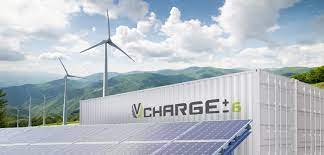Enel to install 6.1 MWh Vanadium Redox Flow Battery in Spain
The patents were previously owned by U.S. storage specialist VionX Energy, and Large Clean Energy acquired its assets for USD 3.8 million

On 22nd July 2021, Large Resources, a Canadian Vanadium mining company announced that its U.S.-based unit Largo Clean Energy has signed its first supply agreement for its VCHARGE ± vanadium redox flow battery system, with Enel Green Power Spain. A part of Enel Group’s Italian renewable energy company Enel Green Power.
As part of the deal, Largo Clean Energy would be providing a five-hour, 6.1 MWh system for a project in Spain, and the system would be starting in the third quarter of 2022.
Vanadium used in the Large Clean Energy’s VPURE and VPURE + vanadium redox flow batteries come from one of the three largest vanadium mines in the world, the Maracás Menchen mine, which is located in Brazil. These compounds are used to develop's Largo's VCHARGE ± vanadium redox flow battery technology.
Largo Clean Energy began the development of its vanadium redox flow battery (VRFB) last year with technology based on 12 patent. The patents were previously owned by U.S. storage specialist VionX Energy, and Large Clean Energy acquired its assets for USD 3.8 million.
The company’s vanadium redox flow battery (VRFB) employs a modular architecture based on 1 MW power and 2 MWh energy building blocks. Its 1 MW system can be configured to provide energy from 4.3 hours to 15 hours, while the 1.2 MW system can be configured to provide energy from 3.6 to 12.6 hours. The 1.5 MW system will be configured for 2.9 to 10.1 hours, when it becomes available. The operating voltage range is 500 V to 800 V and the operating ambient temperature is -40 degrees Celsius to 45 degrees Celsius.
The reported DC efficiency of the vanadium redox flow battery (VRFB) is 78% and the AC efficiency is 68%. The battery’s lifetime is claimed to be of 20-plus years, with unlimited cycles. The company said the storage systems show degradation after 10,000 cycles, which is the equivalent of over 26 years, if cycled daily.






























